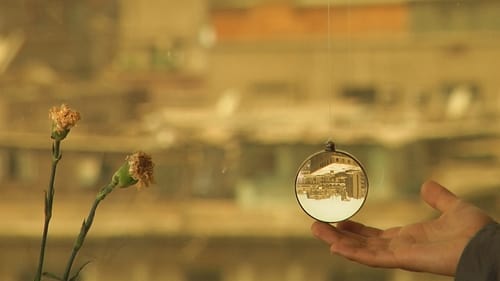
Producer
몰도바 공화국 안에 위치한 트란스니스트리아는 ‘미승인 국가’다. 트란스니스트리아의 국민인 니콜라이는 어쩔 수 없이 몰도바의 여권을 갖고 러시아와 동유럽 국가들을 여행하고, 그 과정에서 니콜라이는 자신의 정체성을 고민한다. 국가와 국가 사이, 그리고 과거의 공산주의와 현재 사이를 오가는 카메라는 니콜라이의 여정을 옆에서 기록하는 동시에 픽션의 이미지들을 과감하게 삽입한다.

Producer
In the fading grandeur of downtown Cairo, Khalid, a 35-year-old filmmaker is struggling to make a film that captures the pulse of his city at a moment when all around him dreams as much as buildings are disintegrating. With the help of his friends who send him footage from their lives in Beirut, Baghdad and Berlin, he finds the strength to keep going through the difficulty and beauty of living IN THE LAST DAYS OF THE CITY.

Director
This experimental documentary contrasts the daily life of a nanny in buzzing Berlin with the tranquil existence of a group of pensioners in provincial Poland. A reflection on female biographies that draws a line between the beginning of life and its end.

Editorial Consultant
A day in the European Parliament and surrounding area. This dance film is inspired by the work and lifestyle of the Eurocrats in Brussel’s EU district and features five dancers. The characters dance, run and glide through the empty spaces in an atmosphere beyond time, decontextualized, in an architectural non-site.

Writer
In the first shot, the place depicted by Marcin Malaszczak looks like a space station on a foreign planet. The camera approaches it from above, identifying only a few islands of light in a sea of darkness. Outside the film, it is - one can assume - part of a quarry: a conveyor belt on which earth and rocks are transported. There is a machine that runs the conveyor belt and a woman with tinted glasses who seems to be in control of the process. The film makes this handful of elements absolute: the conveyor belt, the machine, the woman and the dusty, deserted and unreal seeming horizon. The machine is not a functional tool in a process based on the division of labour, but the world’s motor. Without it, the conveyor belt, and thus the film’s conveyor belt, i.e. the entire world, would come to a standstill. The woman is, therefore, not a wage-earning employee, but the spirit of film and the world.

Director
In the first shot, the place depicted by Marcin Malaszczak looks like a space station on a foreign planet. The camera approaches it from above, identifying only a few islands of light in a sea of darkness. Outside the film, it is - one can assume - part of a quarry: a conveyor belt on which earth and rocks are transported. There is a machine that runs the conveyor belt and a woman with tinted glasses who seems to be in control of the process. The film makes this handful of elements absolute: the conveyor belt, the machine, the woman and the dusty, deserted and unreal seeming horizon. The machine is not a functional tool in a process based on the division of labour, but the world’s motor. Without it, the conveyor belt, and thus the film’s conveyor belt, i.e. the entire world, would come to a standstill. The woman is, therefore, not a wage-earning employee, but the spirit of film and the world.

Director
Sieniawka is a journey into the irrational subconscious of humanity.





